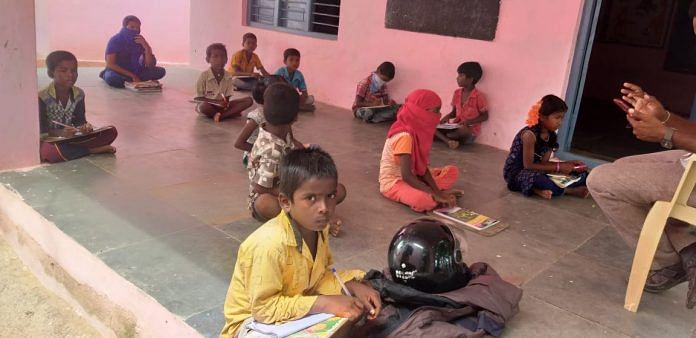New Delhi: About one in every 10 rural households across the country bought a new phone to support their child’s education after schools closed down in March, the latest Annual Status of Education Report (ASER) released Wednesday reveals.
The survey aimed to explore the challenges faced by students, teachers and parents during the Covid-19 pandemic and subsequent school closure.
ASER 2020 (rural) was conducted in September this year, the sixth month of national school closures.
According to a press statement, the survey was conducted in 26 states and four Union Territories.
A total of 52,227 households and 59,251 children in the age group of 5-16 years, as well as teachers or head teachers from 8,963 government schools offering primary grades were surveyed for the report.
The ASER survey, facilitated by Pratham, a non-profit working in the field of education, is an annual survey that maps the status of children’s schooling. The report is regarded highly by policy-makers at the level of both the state and central governments.
Also read: Education ministry draws up 60-point agenda to implement NEP
‘Majority households bought smartphones’
The survey tried to explore ways in which students managed studies during the school closure and the means that they had access to. It found out that over 60 per cent of students had access to smartphones at home.
According to the ASER report, the percentage of rural students having smartphones increased to 61.8 per cent in 2020 from 36.5 per cent in 2018, in both government and private schools.
In the same categories, almost one in 10 households bought a new phone to support their children’s education. Among those who bought a new phone, more than 80 per cent of people bought a smartphone.
The survey also reveals that a portion of rural children who did not have access to smartphones were able to manage studies using a neighbours’ phone. According to the findings, 12.7 per cent students from both government and private schools used their neighbours phone to study during the lockdown.
“Whether acquired before or after school closures in March 2020, more than 80 per cent of children have textbooks for their current grade. This proportion is higher among students enrolled in government schools (84.1 per cent ) than in private schools (72.2 per cent),” reads the report.
The survey also explored whether children received learning support from family members at home and found that younger children received more support as compared to older ones. Overall 81.5 per cent children in Class 1 to 2 received learning support from family members as compared to 68.3 per cent in Class 9 and above.
One-third of students received study material from schools
The ASER 2020 asked households whether schools had sent some kind of study material for the children in the week prior to the survey (taken as a reference week).
The material included textbooks, worksheets, online/recorded classes, video or some other form of virtual lessons. “Overall, approximately one third of all enrolled children received some kind of learning material or activities from their teachers during the reference week,” the survey said.
Students who received study material received it in a variety of ways, like WhatsApp, phone call, personal visit. But, of all the mediums that were used, Whatsapp was the most commonly used medium for sharing learning material and activities. “A higher proportion of students enrolled in private schools received material through WhatsApp than their counterparts in government schools. Accessing material via phone calls/personal visits was more common among students in government schools,” the survey added.
“Although only a third of children had received materials from their teachers during the week preceding the survey, most children — 70.2 per cent did do some sort of learning activity during that week,” the survey report read.
“The major types of activities done involved textbooks (59.7 per cent) and worksheets (35.3 per cent),” it added. “The proportion of children in government schools and private schools doing these activities was similar.”
The survey also pointed that children in private schools were much more likely to have accessed online resources than those in government schools. For example, 28.7 per cent of children enrolled in private schools had watched videos or other pre-recorded content online, as compared to 18.3 per cent of government school students.
Also read: 7-year-old game developers? Why coding is India’s latest education fad



